Today I'm really excited to release a little side project I’ve been working on for the past couple of weeks: The Finer Gifs Club

The Finer Gifs Club is a search engine for gifs based on lines of dialogue from The Office (US), one of my all-time favorite shows. The Office is an incredibly quotable show, and in the past I’ve found myself not only wanting to quote a joke from the show, but to do so by sharing it via an animated gif, the Internet’s own lingua franca. Gifs are the perfect medium for a show like this: they’re self-contained, viewable pretty much anywhere, can contain both dialogue and visual gags, and best of all they loop forever.
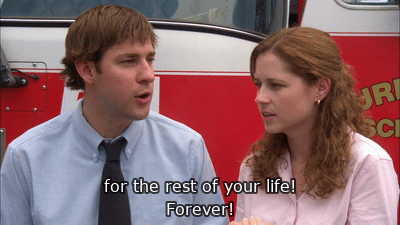
The problem was using tools like Google Image search or even a gif-specific search engine like Giphy was kind of a pain. There’s no easy way to filter down to only searching for lines from just The Office, and worse if the line you want to quote is particularly obscure, it might not have ever been made into a gif. The Finer Gifs Club was my attempt at solving these problems.

Why did you do this?
A couple of years ago, I read a blog post by Bertrand Fan who had managed to create a Slack command to return animated gifs from episodes of Seinfeld. In his post, Bertrand explained he was able to automate creating his gifs by using the subtitles that came with the videos. You look through all the subtitles for an episode — noting the start and end time of that section — then draw the text on top. Run this approximately 100,000 times and presto you have animated gifs of an entire show without breaking a sweat.
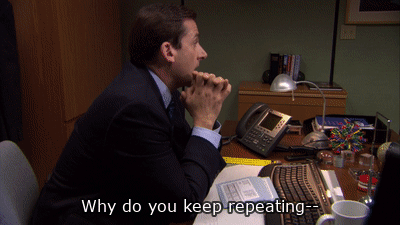
I was really awe-struck by this idea. I thought it’d be fun to try it out for myself someday, but soon forgot about it and moved on to other distractions (like video games). Then, a few weeks ago I started listening to this great new podcast about The Office called Somehow I Manage. It reminded me of both how many great jokes are in the show, and also how difficult it is to find some of the jokes in gif format. I looked around the Internet, assuming someone must have copied Bertrand’s idea by now, but found nothing. I’d been searching for a fun side-project to put my skills to the test, and so I settled on it: I’d make the best gif search engine for The Office I could muster.

How does it work?
I’ll follow up with a series of posts that dig into the technical details of this project and the issues I ran into, but for now I’ll give a high-level overview of how it all works. I’ll confess that I mostly stood on the open source shoulders of giants: most of the creativity of this project was really in gluing it all together.
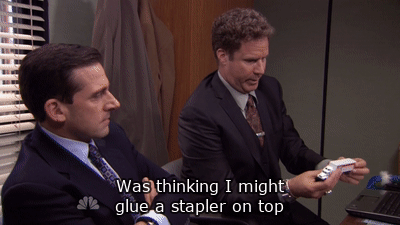
Making the gifs
I didn’t really re-invent the wheel here. I took Bertrand’s basic concept and wrote my own code that followed a similar formula. I would loop through episodes of The Office and look at their subtitle files (srt’s in my case). The format is quite simple: it has timecode for where the text starts and ends, and then the actual text content itself. Looping through these sections, I fed the start time and duration to ffmpeg, and drew the subtitle text on top. It took a few dozen tries, but after a day or two of tinkering I had a full episode’s worth of gifs I was pretty happy with. Armed with moderate success, I threw my whole collection of episodes of The Office at it, and 90,279 gifs and 52 hours later, it was done1.

Indexing
Now that I had a ridiculous number of gifs on my computer, it was time to make them searchable. First, I had to make the gifs reachable from the Internet, which was actually the easy part. Amazon’s S3 storage service makes it crazy cheap to host a lot of files. I pointed their command-line tool at the folder with my gifs and, thanks to my gigabit Fios connection, was able to get them all uploaded in an hour or two.
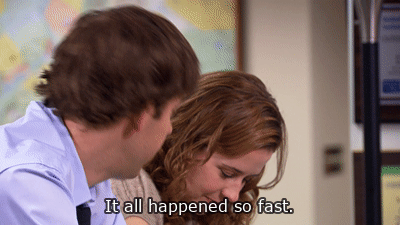
Next up: search. I’m a front-end developer at my day job (we’re hiring!) and don’t really know anything about writing a search backend, so I once again turned to the Internet’s favorite web services crutch, Amazon Web Services. And sure enough, they had a CloudSearch service I could use, no back-end code required!
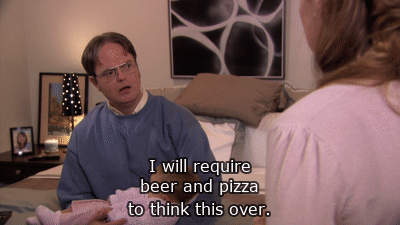
I skimmed CloudSearch’s documentation and found it only needed me to submit a list of what they called “documents.” Each document needs a unique ID, followed by any number of arbitrary fields you’d want to search for. So, after building the gifs for each episode I wrote out a file that contained the text of the subtitle (which I’d use to search against) and a file id (which I would use to link to the matching gif). After all the gifs were done, I uploaded the indexes to AWS and BOOM, I had a working search engine!

Searching
Now that I had a search engine I could address via a web API provided by Amazon, I needed a way for users to be able to perform their own searches. This, mercifully, finally brought me to my comfort zone. Over the course of a few days I built out a VueJS-based static website that contained just a search field and a list of results. The search field would hit my AWS search engine and return a list of matching documents from CloudSearch, and I’d use the file id field to build out a URL to the gifs on S3. I uploaded the site to S3 and, before I knew it, holy moly I was done!
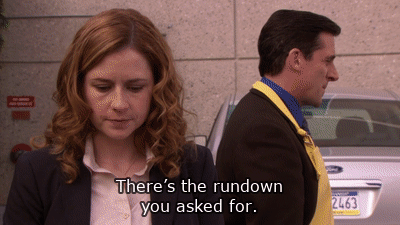
Wrapping it all up
I’m obviously glossing over a lot of details2, but in broad strokes that’s all there is to it. I want others to be able to fork, build on, and improve on my work, just like I did on Bertrand's, and so I've also open-sourced all the code that I wrote for this project:
sub-gif-genMy terrible name for the script to create the gifsthefinergifs.clubThe VueJS-based web front-endfiner-gifs-lambdaMy lambda function that integrates Finer Gifs with Slack
I was able to take something from crazy idea in my head to a fully working, cloud-based, infinitely scalable, and even Slack-integrated service in the matter of a few weeks. I was blown away by what I was able to accomplish, and I hope you have as much fun finding finer gifs as I did building them.
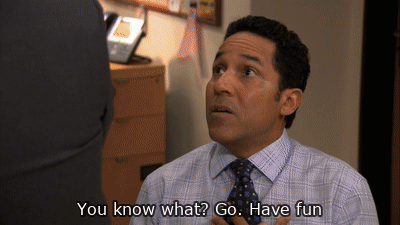
-
And by done, I mean I messed up these gifs loads of times. I think I re-generated all of the gifs at least a dozen times, finding weird typos, mistakes, and corruptions each time. This was probably the most painful part of the entire process, and there's still weird issues I find all the time. ↩
-
And pain. Lots and lots of pain. Have I mentioned I had to re-make the gifs a lot of times? ↩